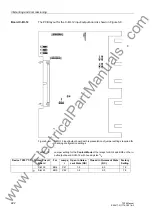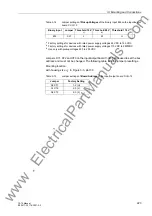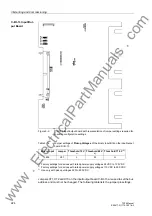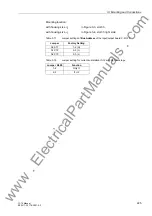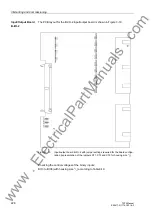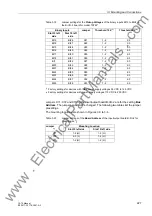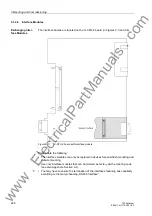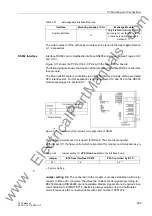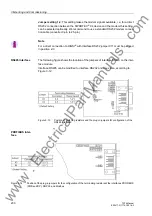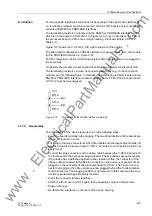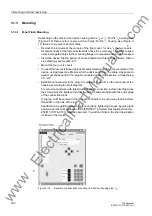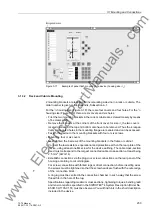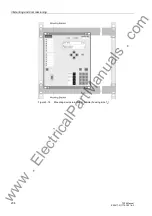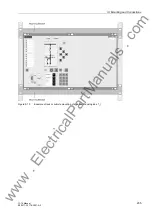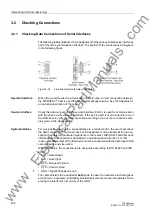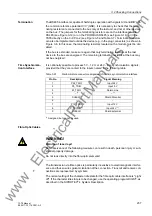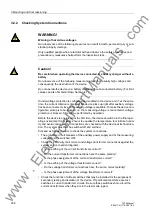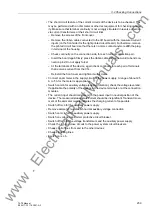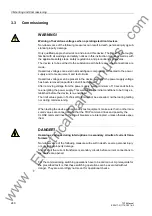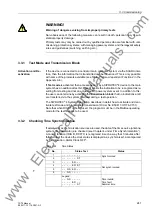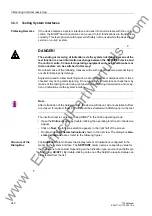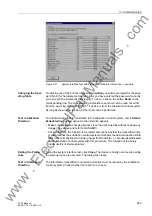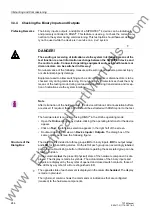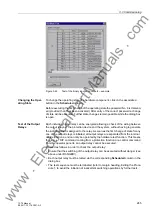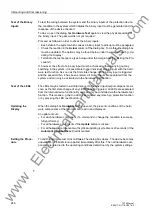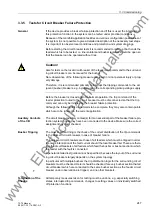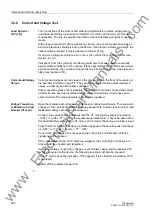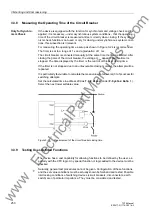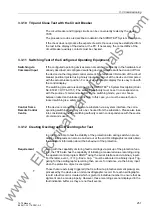
3 Mounting and Commissioning
236
7ST6 Manual
E50417-G1176-C251-A3
3.2
Checking Connections
3.2.1
Checking Data Connections of Serial Interfaces
The following tables illustrate the pin assignment of the various serial device interfaces
and of the time synchronization interface. The position of the connections can be seen
in the following figure.
Figure 3-20
9-pin subminiature female connectors
Operator Interface
When the recommended communication cable is used, correct connection between
the SIPROTEC
®
4 device and the PC is automatically ensured. See the Appendix for
an ordering description of the cable.
Service Interface
Check the data connection if the service interface (Port C) is used for communication
with the device via fix wiring or a modem. If the service port is used as input for one or
two RTD-boxes, verify the interconnection according to one of the connection exam-
ples given in the Appendix A.3.
System Interface
For versions equipped with a serial interface to a control centre, the user must check
the data connection. The visual check of the assignment of the transmission and re-
ception channels is of particular importance in the context. With RS232 and fibre optic
interfaces, each connection is dedicated to one transmission direction. For this
reason, the data output of the first device must be connected with the data input of the
second device and vice-versa.
With data cables, the connections are designated according to DIN 66 020 and ISO
2110:
• TxD = Data Output
• RxD = Data Input
• RTS = Request to Send
• CTS = Clear to Send
• GND = Signal/Chassis Ground
The cable shield is to be earthed at
both
ends. In case of an extreme electromagnetic
environment, a separate, individually shielded pair of wires can be incorporated for im-
proving the interference immunity of the GND.
www
. ElectricalPartManuals
. com

